|
|
راهنمای مدیر وظایف نقشهکشIf the user interface of the version you use looks different from the one described here then you should consult our version overview
The Tasking Manager is the most popular tool to team up and coordinate mapping on OpenStreetMap.
You can use the widely used HOT Tasking Manager to get started mapping immediately for humanitarian organizations and their work in the field. The Tasking Manager is one software in the whole OpenStreetMap ecosystem. When you are contributing to OpenStreetMap using the Tasking Manager, you are actually using multiple software tools:
The role of the Tasking Manager is to present a specific geographic region and divide it up into small mapping areas called “tasks”. These can be locked by a mapper to avoid that other contributors map the same objects, introduce duplicated data or run into conflicts. Once mapping is complete in this small area the mapper reports back to the Tasking Manager that it is finished. And the mappers can select a new task to continue their contribution to OpenStreetMap. Experienced mappers are going to check each of the tasks and make sure the quality of the data introduced in OpenStreetMap is acceptable. Eventually they would mark the task as validated or give it back to the mappers with instructions on how to improve. راهنمای شروع سریع
Mapping Process
ورود به سیستم مدیریت وظایفThe Tasking Manager is a special tool that coordinates mapping in OpenStreetMap. It makes use of the OpenStreetMap login system. This means that you do not need to create a separate user account to use the Tasking Manager, but you do need to create an OpenStreetMap account and login to OpenStreetMap.org before you can use the Tasking Manager for mapping. When you visit the Tasking Manager homepage you can choose between the In case you already have an OpenStreetMap account, press
A new tab will open allowing you to register on OpenStreetMap.org. Provide your account information and press the
Close the tab and go back to the Tasking Manager. Click the button to
تنظیمات
The Task Manager initially displays in English - to change to another language click on English. From here you can also;
پیداکردن پروژه
The Tasking Manager Project list screen is divided into three main areas:
گزینههای جستجو و فیلترBy default all the projects available for mapping are displayed. You can use the Search filters section of the screen to further narrow down the projects that you would like to work on.
Map View If you choose to show the map, you can view a map of the world showing where the projects are, or a disk indicating the number of projects in an area. Zoom in for more details, and you can select a project by clicking on its link from the map.
صفحه مرور کلی پروژه
Icons indicate the types of mapping, such as:
Project tasks pageThis is your main screen for working on a project. The screen is divided into two parts. The left section is a tabbed panel with tabs for:
The right side of the screen is a map showing the tasks (often squares) coloured according to their status. Tasks that are available to you can be selected by clicking on them.
Although you may have set your preferred editor within your preferences page, you do have the option of changing editor just for the task you are about to select. انتخاب ویرایشگرDifferent options for editing are presented to you as soon as you lock a task. ویرایش با JOSMStart JOSM before using this link and it will automatically load the existing OSM data into JOSM.
وبرایشگر iDSelect this to automatically start the OpenStreetMap iD editor within the Task Manager of your web browser, with existing OSM data loaded. The Internet Explorer web browser does not currently support iD and it will load Potlatch 2 instead. Potlatch 2The editor will load in a new window or tab. Potlatch will not automatically display the task bounding box at this stage. ورقههای میدانیFor use only when you are involved in a project where a local mapper has carried out a ground survey and marked a printed map with information such as road names. This map can be rescanned and used as a background image for a remote or local mapper to read the information and update the OpenStreeetMap data Field papers section of LearnOSM. Select a task to map
Just to confirm - Clicking on the Start Mapping button, or locking your square from the map, locks the task so that no other mapper can select it until it is released again, and starts a 2 hour (120 minute) countdown timer, at the end of which time the task is automatically released. It is easy to become engrossed in your mapping and not realise your task has been released, and has now been selected by another mapper who has started mapping it too. This can lead to conflicts and problems.
Splitting a task squareHaving selected your task and inspected it with the imagery in place, you may realise that there is far too much detail required for mapping. An example of this may be tracing buildings in dense urban areas, or locating small villages in large areas. As guidance, where it isn’t possible for one person to complete within the 2 hour time limit you can often split the task into 4 smaller areas. Use with caution - if/when task squares are split too small it is difficult to judge what type of highway is involved, and to identify other features.
Submit your mapping task
##### بازکردن قفل یک وظیفه قبل از تکمیل شدنIf you start working on a task, but cannot complete it for some reason, it is best practice to leave a comment in it. Simply detail what remains and choose برای مثال: If you didn’t map at all, you can just go back without leaving any comment by choosing Submit a task that is completely mappedOnce you are done you can save all changes to OpenStreetMap:
Marking a Task as Bad ImageryYou will sometimes select a task that can not be mapped because the imagery is low resolution or has cloud cover. In this case please indicate Sending a message from the comment boxWhen leaving a comment against a task, you can have the comment sent as a message to a named mapper. Much like Twitter, simply use an @ followed by the username. This will send a message to the user containing the comments from this box, plus a link to the task that the comments box relates to. For example: This is particularly useful when validating or adding on another’s previous work - you can provide feedback, thanks or more.
کمکایمیلFor questions which might require a little research to answer or more detailed explanations, usually the best channel is to write to mapper-support@hotosm.org Live text based help
Leaving a Project question / comment / contacting the Project creatorUsing the “Comments” tab for the project you can see other users’ questions and comments and leave one of your own. All comments are public and it is not live chat. Use the Slack option above if you need immediate attention.
فوت و فنهای ویرایشBy now you have a good understanding of what the Tasking Manager is, and some of the various functions it supports. Unlike normal editing, this tool is often used for time critical projects with many participants - this may be a little bit different to what you are used to. Some general advice to heed when working in this tool:
## صحتسنجیValidation is the process of an experienced mapper reviewing the mapping of the initial mapper of a project task. It is designed to confirm that the mapping is complete and the quality of the data is good. It is also there to give encouragement to mappers by thanking them for their time, confirming that their mapping is good or giving instructions on how to improve their mapping. The most effective practice is to find beginner mappers at the early stages of their mapping, putting their mind at ease and giving them confidence by confirming that they are doing the right thing, or helping them to correct any errors that they may have before they have mapped too many tasks. This reduces the amount of fixing required at a later stage to get their mapping up to standard and gives them the encouragement in knowing that they are supported in what they are doing. ## پروفایل کاربریتانThe Tasking Manager 4 has a number of changes that affect the data available for doing validation. Please make visiting your user profile your first activity in the new Tasking Manager, by selecting Settings from the popdown menu under your OpenStreetMap (OSM) user name in the upper right corner. • Under Personal Information make sure you have filled in your preferred email address. • Under Settings switch on Expert Mode and select your default editor and preferred language. • You can also choose what notifications you wish to receive. شروع به کارTo get started click on Explore Projects on the top bar of the page. On the Projects page you can click on any of the projects to go to that project or you can use the range of filters for selecting the project or projects you wish to see or select from.
After filtering and/or selecting the project you want to work on, scroll down to the bottom of the next page to Questions and Comments to see any messages left by previous mappers/validators regarding the project. Then in the bottom right click on the red button Contribute to move to the next page. This page should open with the project instructions visible (1). If not then select Instructions. Read the instructions to understand what imagery is to be used and what the mappers have been asked to do. This will give you an understanding of why the mappers are mapping the way they do and if the instructions are misleading and the mappers are consistently getting it wrong because of that then you can contact the Project Manager to change the instructions to reduce the effects of that happening.
Check that you have the correct Editor (2) Select a blue task to validate (3) Click on the red button Validate selected task at the bottom right (4) A new page will open in the Tasking Manager and the selected task will be loaded into your editor. On this page your task will have a red padlock, other tasks locked will have black padlocks. You are still able to access the Instructions on this page. You can see who has mapped or validated this task in the History and access their profile and statistics by clicking on their name. Selecting Multiple Tasks for ValidationIf the mapper has more than one task completed then they will be selected on the map if you press on one of the numbers. You can download all the tasks in one go to validate. They will automatically adjust your JOSM/iD window to accommodate all of them.
Depending on which editor you are using, this feature will behave differently. In JOSM, a second OSM data layer will be created titled “Task Boundaries - Do Not Edit or Upload” and it will have uploading disabled in recent versions of JOSM. JOSM will not download the OSM data because it could be a very large amount of data. Instead you will have to use the task boundaries as a guide and download the data to the active editing layer manually. نهایی کردن صحتسنجیTo validate/invalidate a task you need to select Yes/No under Is this task well mapped, then enter your comment, then click the red button Submit task to save before selecting another task. If you want to leave without changing the status of the task leave a comment then click on Stop validation.
For those two choices you can and should leave a friendly, encouraging comment addressed to the mapper(s) involved and provide thanks for their contributions and feedback on their mapping. Please be considerate before marking a task as invalid. If just a few bits are missing add them yourself, explain what was missing in your comment but nevertheless mark the task as valid. New mappers will consider their completed task marked as invalid as a fairly harsh comment. You can access a mapper’s statistics on their profile page at https://tasks.hotosm.org/users/username.
این فصل مفید بود؟
به ما بگویید و کمک کنید راهنماها را بهتر کنیم!
|

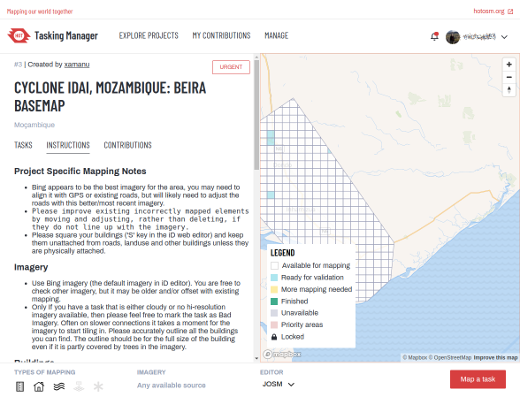
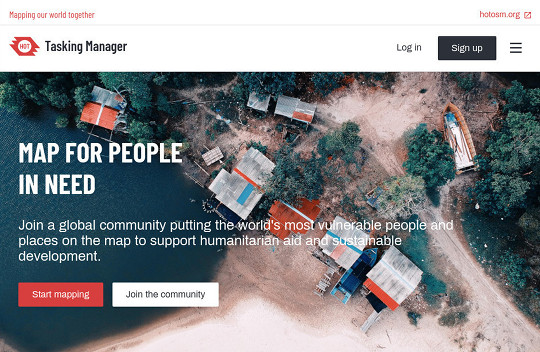
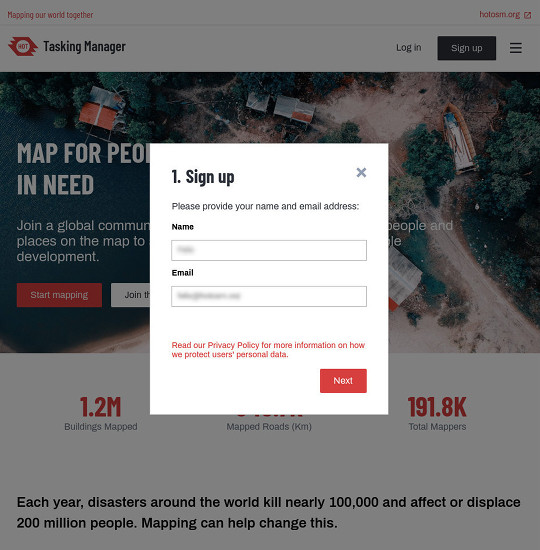
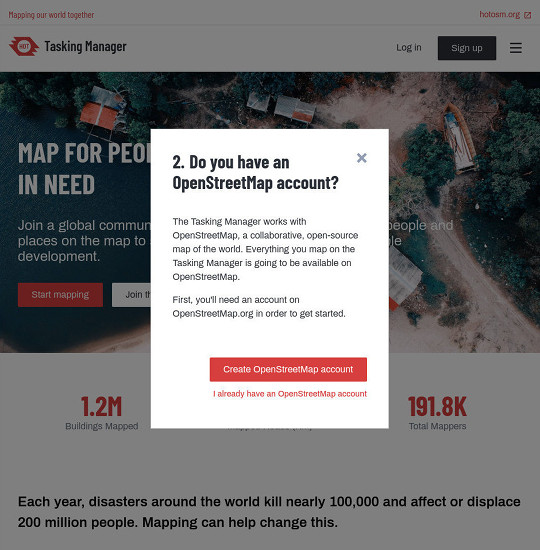
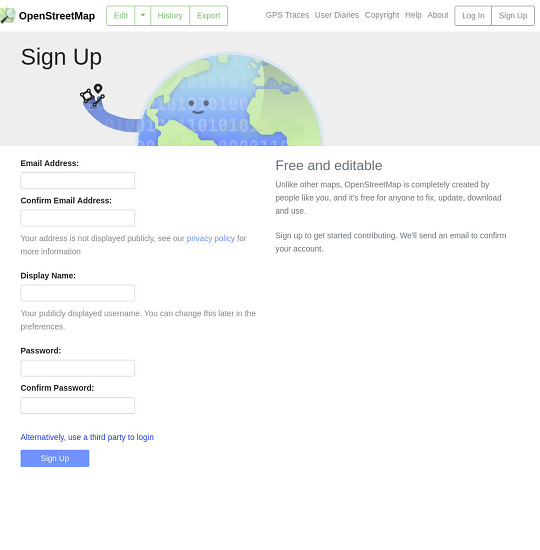

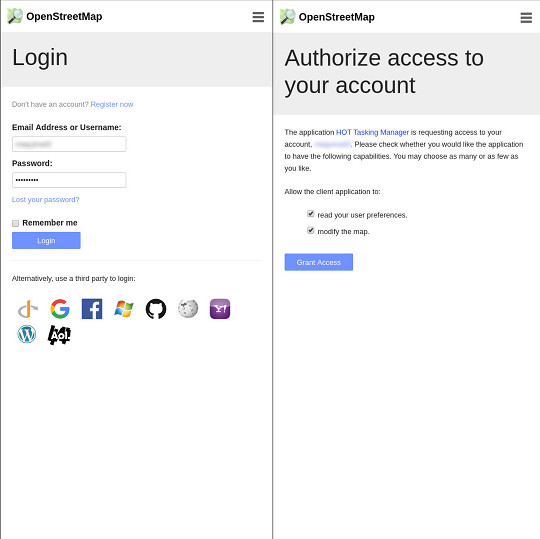

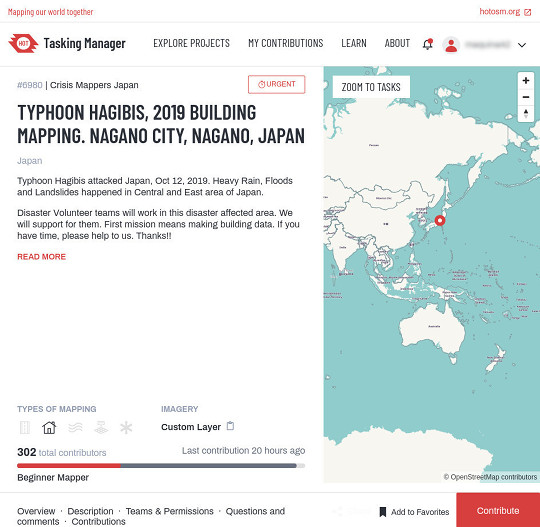
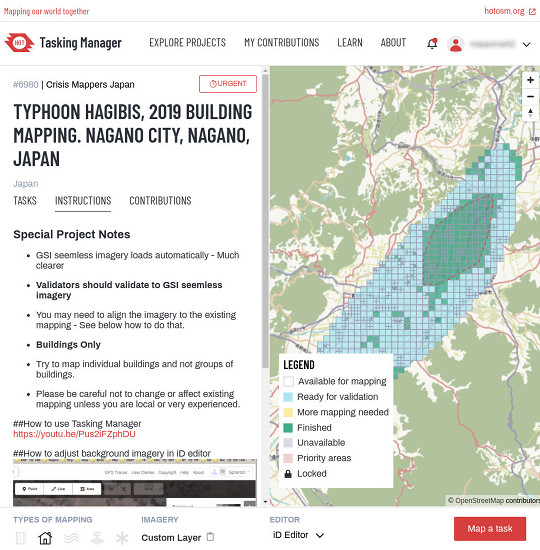 Alternatively, you can also select one task from the map and choose
Alternatively, you can also select one task from the map and choose 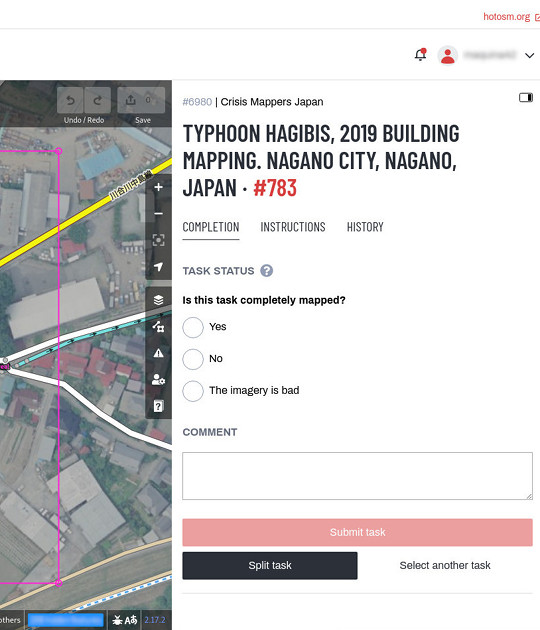
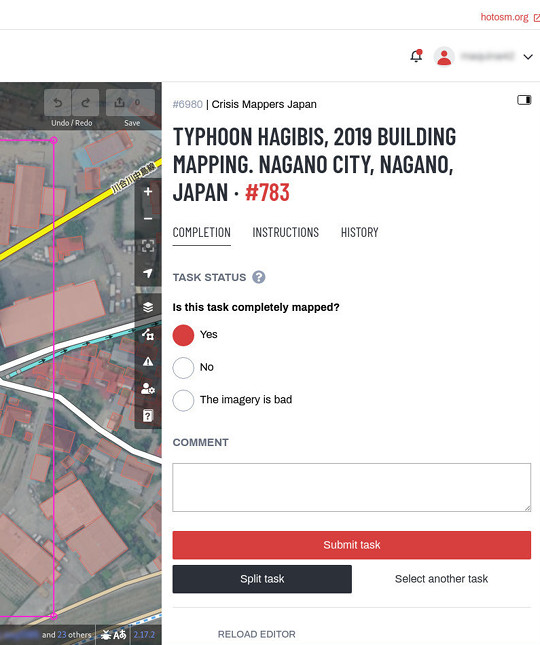 After this, you can go back to step 7 and select a new task for mapping. Thank you for your contribution to OpenStreetMap!
After this, you can go back to step 7 and select a new task for mapping. Thank you for your contribution to OpenStreetMap!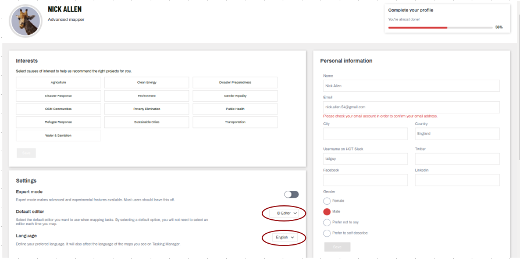
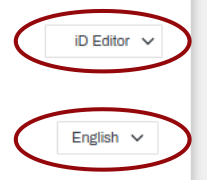
 icon, top right.
icon, top right. The
The 

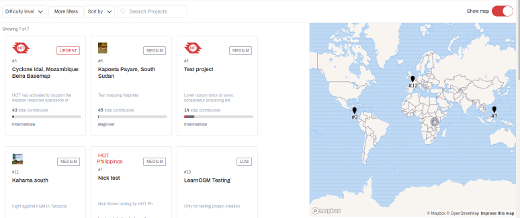
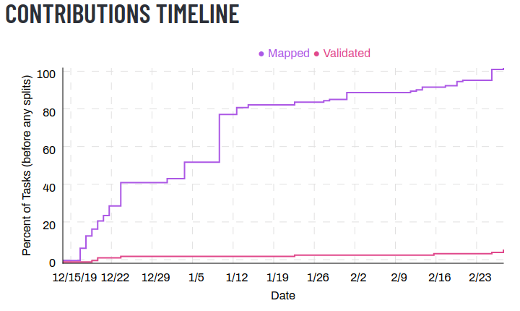 Once you have located a project of your interest, clicking on it will take you to the overview page for that project. Read the description carefully and scroll down for more information, such as the organization who coordinates the mapping for this project, who can map or validate, any comments about the project, a progress graph and the list of contributors.
Once you have located a project of your interest, clicking on it will take you to the overview page for that project. Read the description carefully and scroll down for more information, such as the organization who coordinates the mapping for this project, who can map or validate, any comments about the project, a progress graph and the list of contributors. The
The 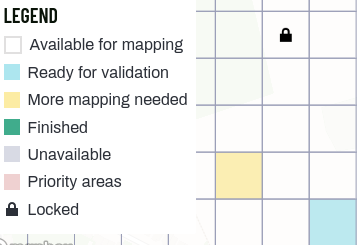
 are locked by another mapper
are locked by another mapper The button
The button  Once you have locked your Task, and your square (Task) boundary shown. You can still click on the tabs for:
Once you have locked your Task, and your square (Task) boundary shown. You can still click on the tabs for: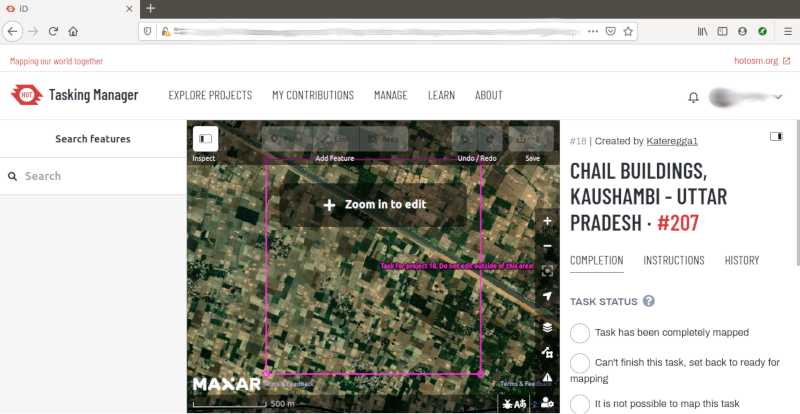
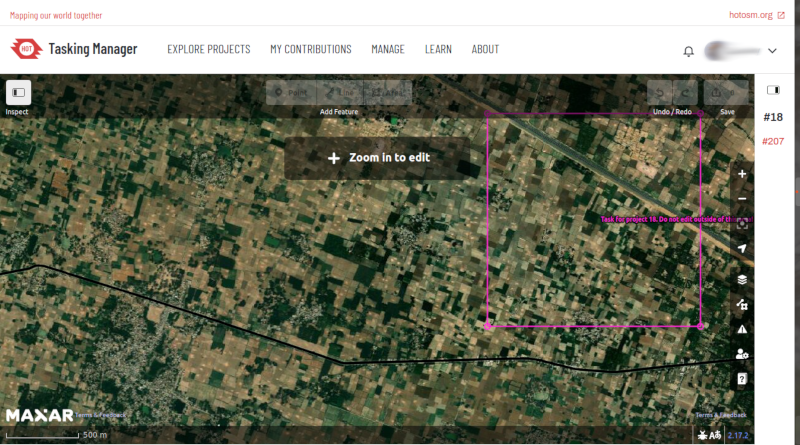
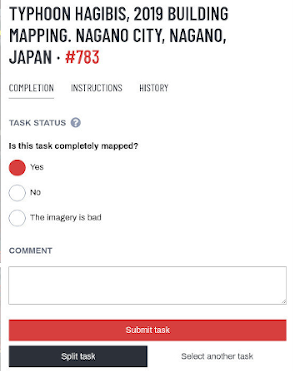
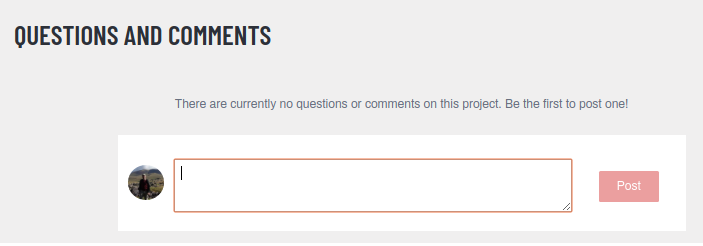
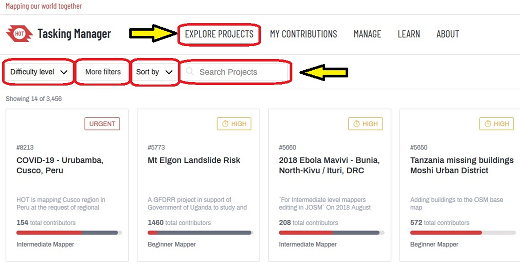
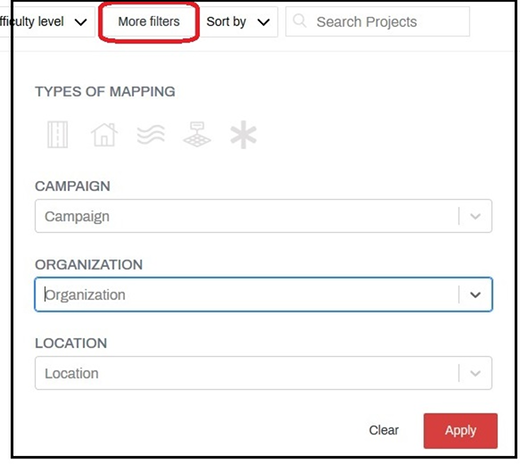
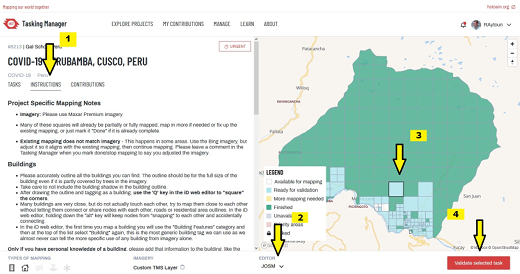
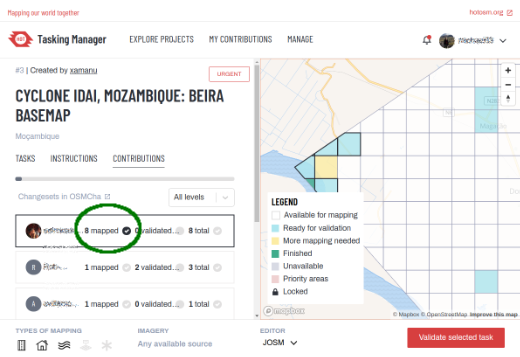
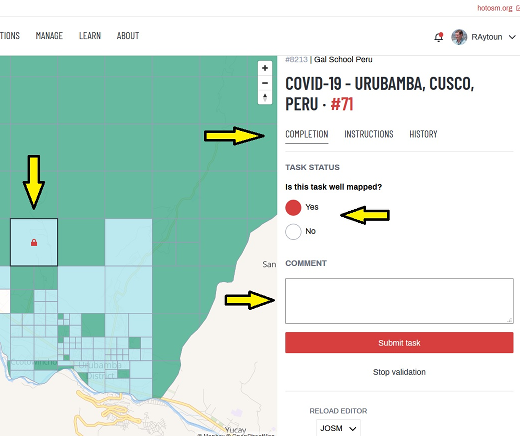
 بازگشت به ابتدای صفحه
بازگشت به ابتدای صفحه